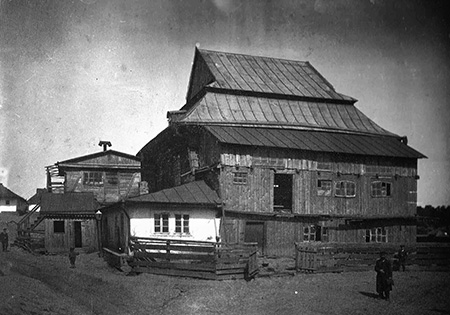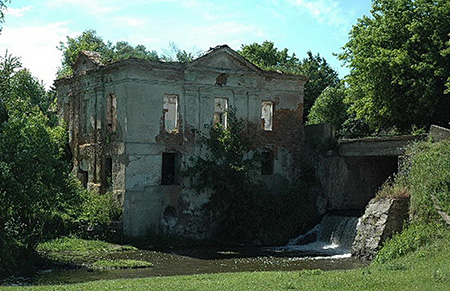Ansky visited Kotenlansky's Ostropol a few years before writing the play. The description of the shtetl fits Ostropol perfectly: "A square...Left, the old synagogue built of wood and of ancient architecture... A wide road leading down to a river... To the left: a bridge over the river and a mill." Ostropol indeed had a very old wooden synagogue on the market square, a wide road (which connected Ostropol with Starokonstantinov) right below it, and, further down, a river with a mill (the very one that probably belonged to Kot's father at the time Ansky was collecting materials there).
The description of the synagogue in the 1915 variant of the play, which was recently unearthed at the St Petersburg Theatre library, makes this conjecture even stronger: it mentions multiple roofs, something for which the Ostropol synagogue was famous (Judging by the images that survived, it had at least seven of them: a tall wooden synagogue, blackened with age, with an elaborate system of roofs, one atop another" Ostropol would also work perfectly as the real-life model for Brinits because the relatively short distance between it and Miropol would make the movements in the play very plausible, and because other towns mentioned in the play as the nearby seats of famous rabbis - like Ruzhin, Ostrog, Zaslav, and Annopol... - were, like Miropol, in Ostropol's close vicinity.


